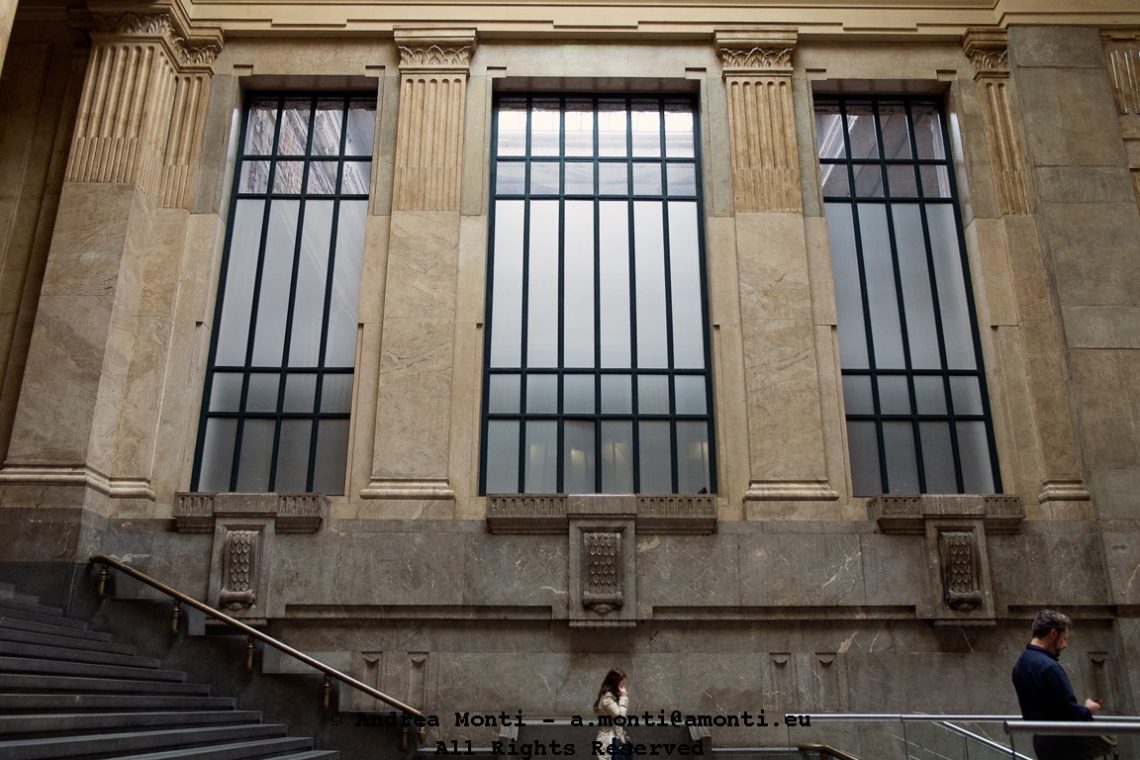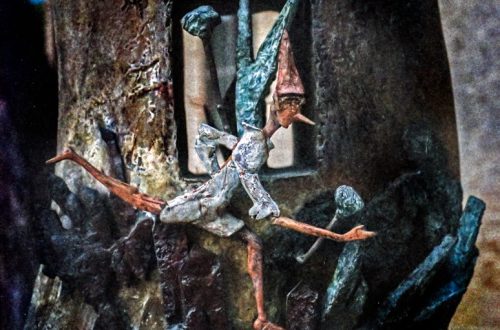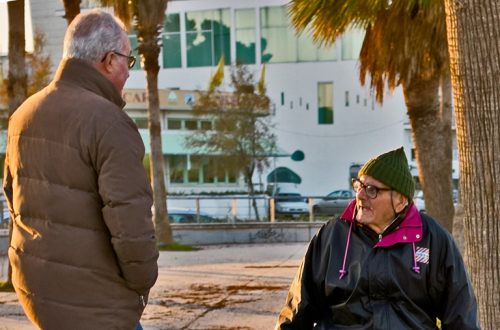
Reasonable Privacy Expectation
There is something almost cinematic about this frame. The architecture dominates: a vast façade of marble and glass, its verticality emphasised by the tall, narrow windows, the symmetry broken only by the two small human figures at the bottom. They are dwarfed by the structure, physically and visually, and yet they animate the space just enough to draw our eye away from the grand design and towards the everyday.
Compositionally, the image is measured and deliberate. The camera is held level, avoiding converging verticals, which is crucial in architectural photography. The placement of the figures — one ascending the stairs, the other absorbed in a phone — adds a natural, almost incidental rhythm to the otherwise rigid geometry. That diagonal of the handrail cutting across the lower third is not only a compositional counterpoint but also a device to connect the human presence with the monumental backdrop.
Exposure is well handled. The stone’s subtle variations in tone are preserved without crushing the shadows or letting the highlights burn out, and the frosted glass retains a delicate gradient from opaque grey to near-white. There’s a restraint here: no dramatic contrast curve, no exaggerated sharpening — just a faithful rendering of the material textures and the quiet interplay of light.
Thematically, the photograph’s title invites reflection. The towering windows suggest openness and surveillance, but the frosted panels obscure as much as they reveal. The people below seem unaware of — or perhaps indifferent to — any gaze, whether from inside or outside. It’s a visual metaphor for the way public spaces mediate privacy: we are visible, but rarely truly seen.
This is one of those images where the scale, the setting, and the fleeting presence of people combine into something quietly resonant — a reminder that in the midst of monumental architecture, we are both part of the scenery and entirely our own.




